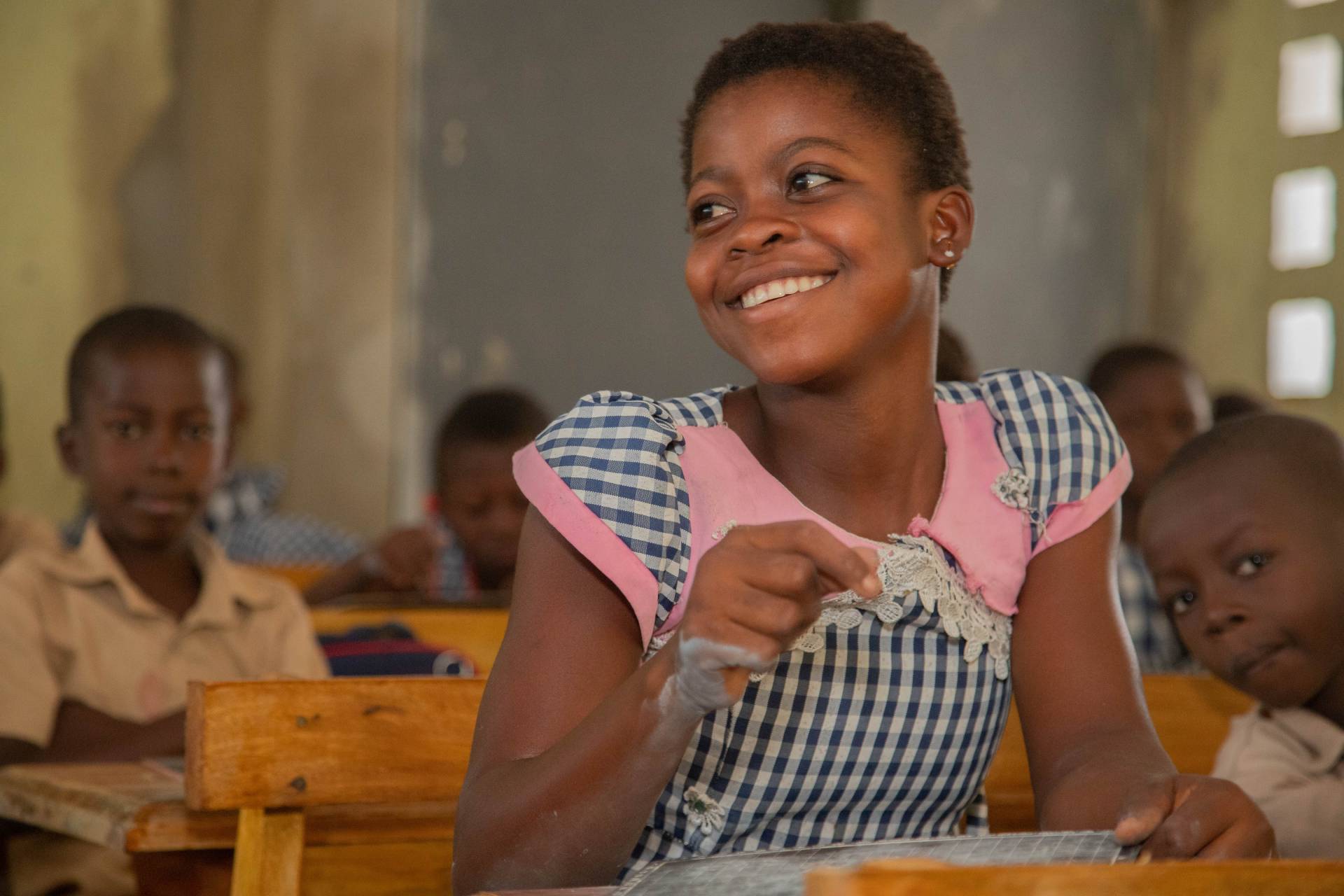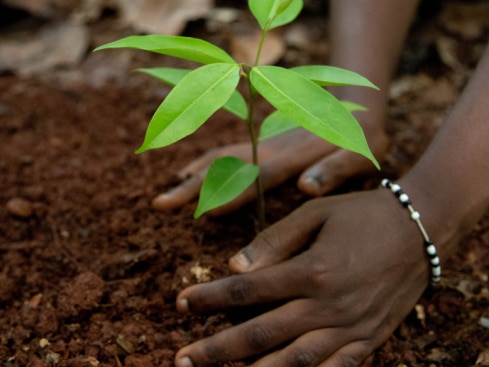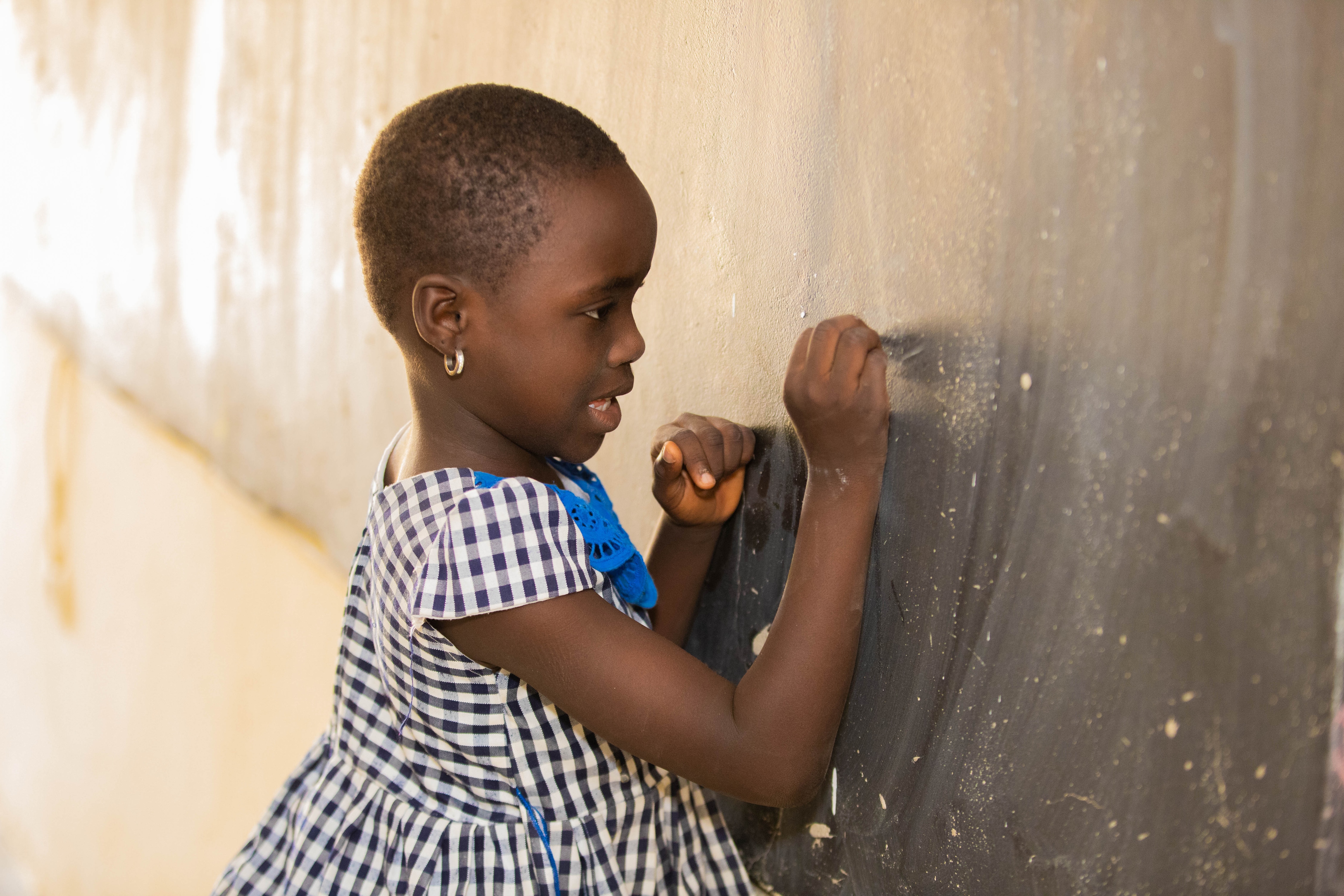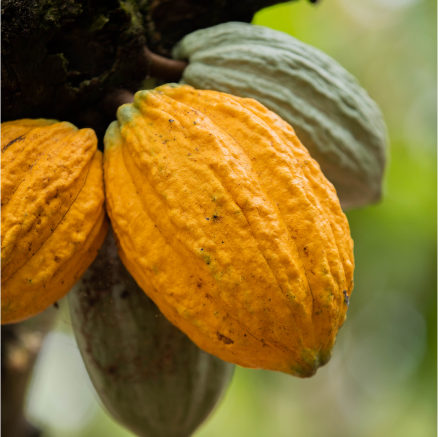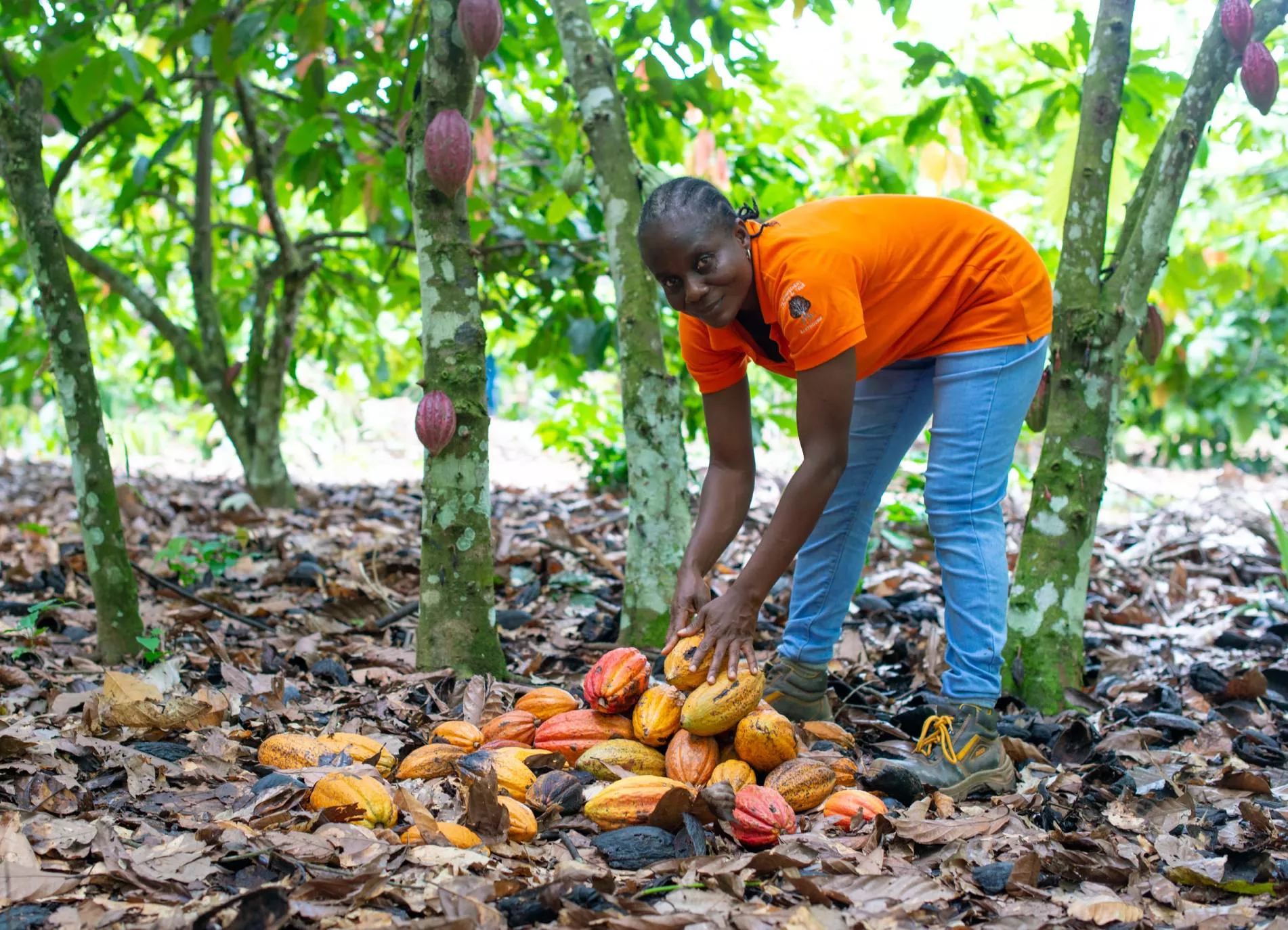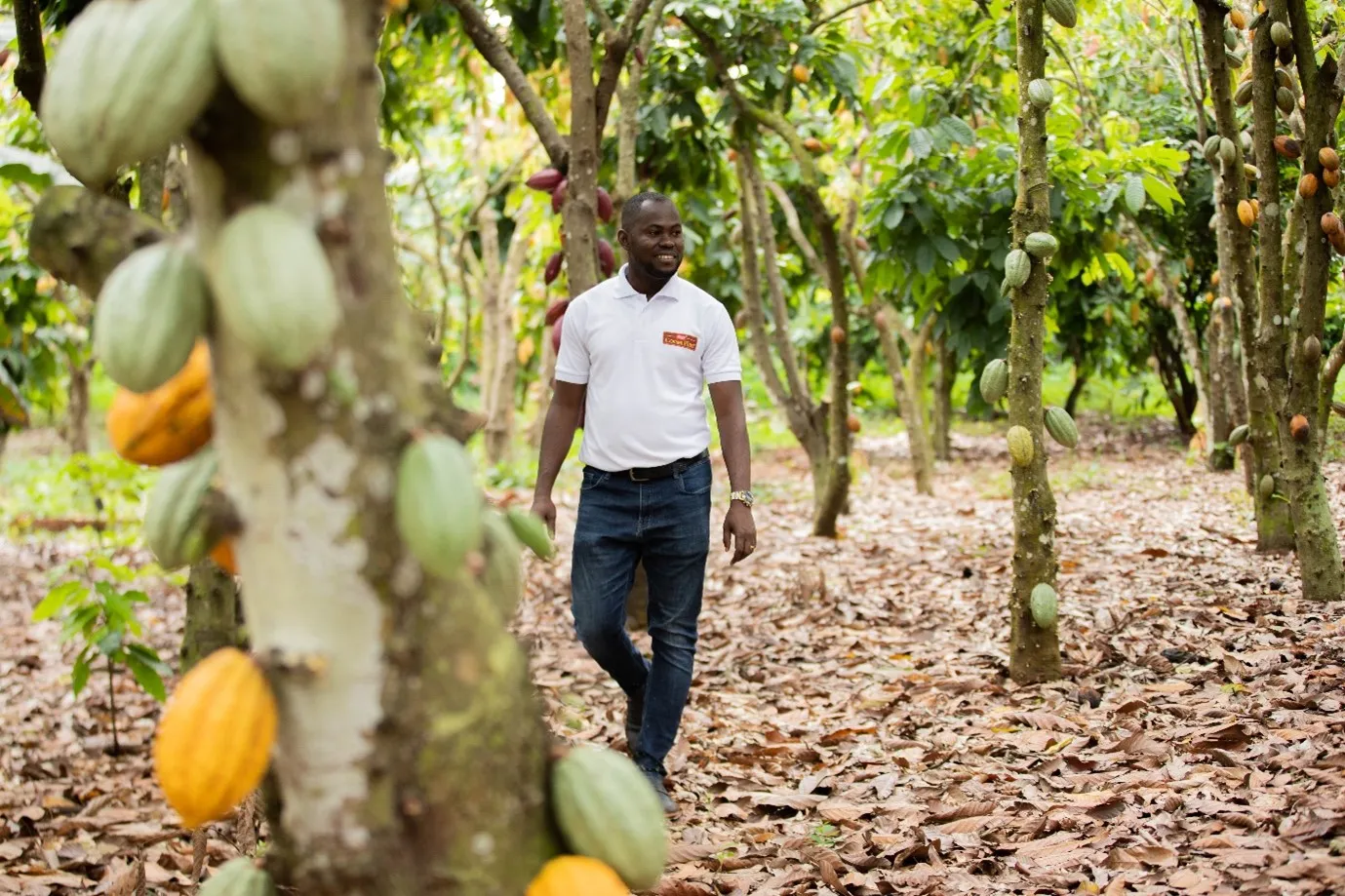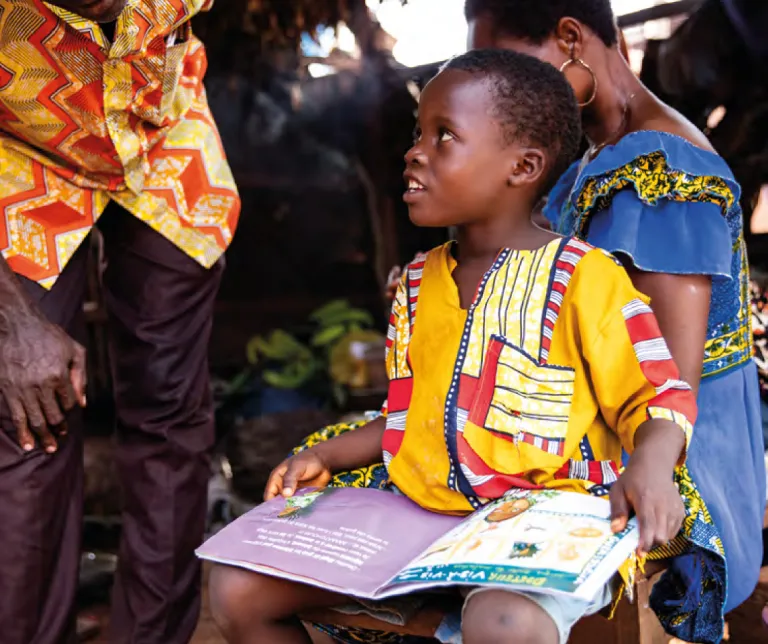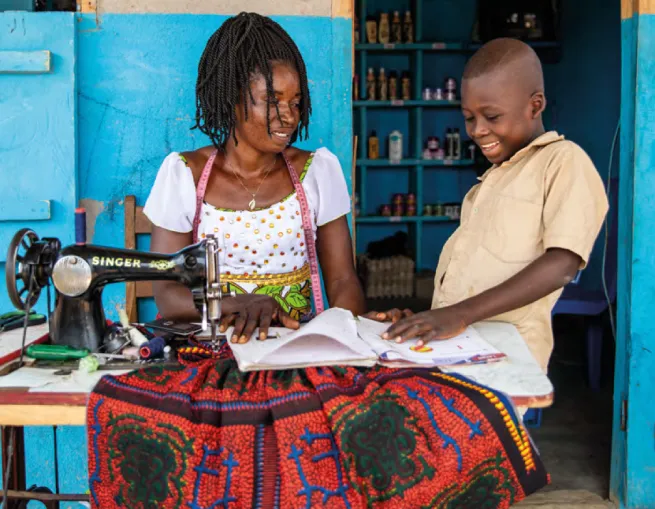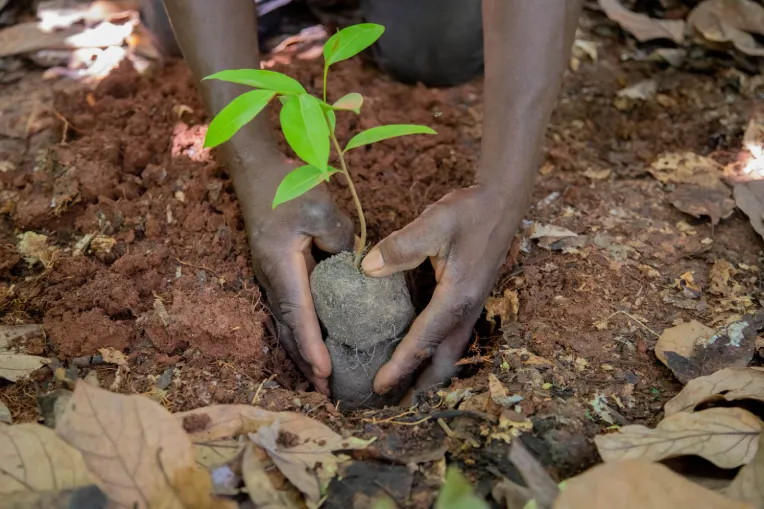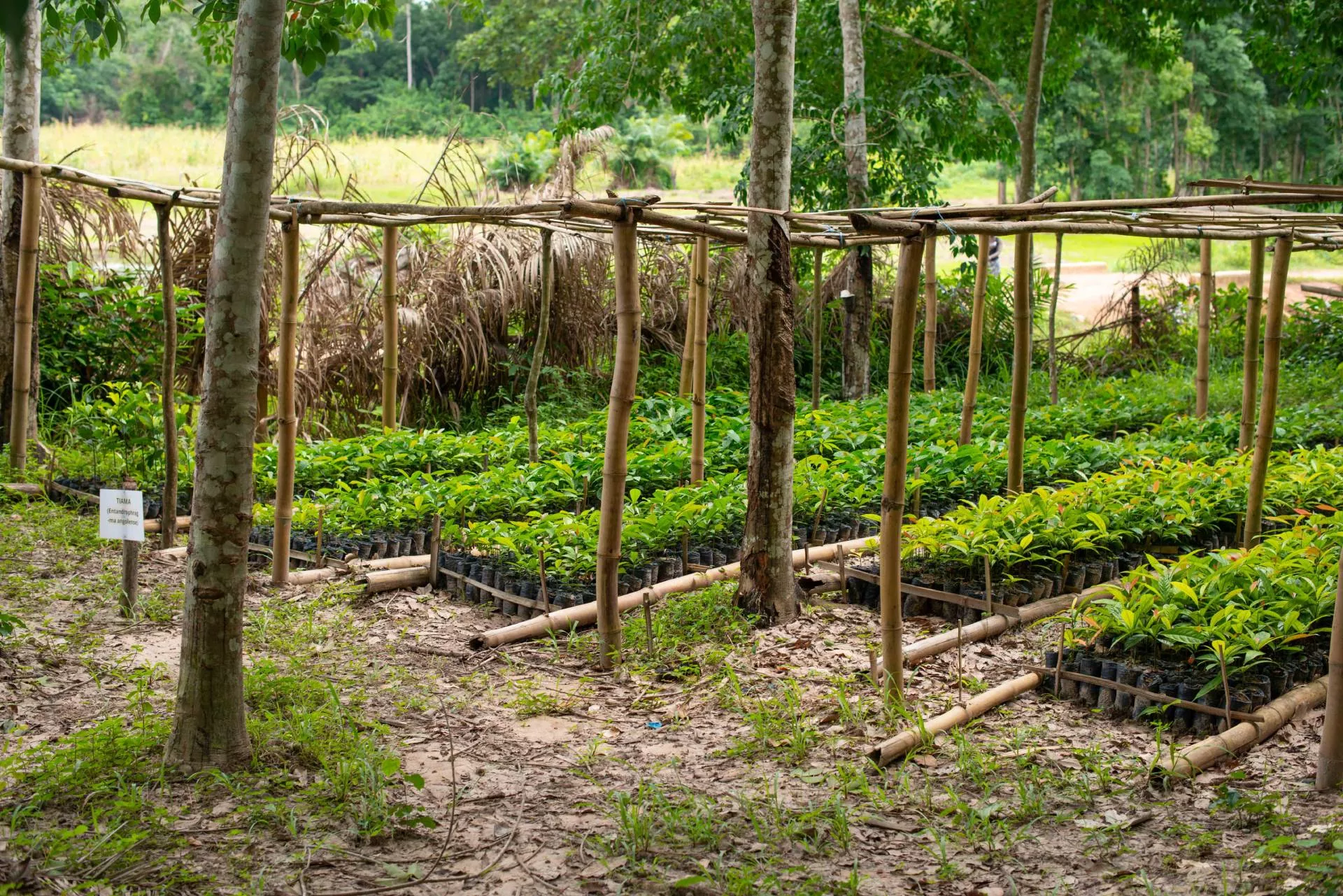Our Nestlé Cocoa Plan progress for 2024
88.9%
Cocoa sourced through
the Nestlé Cocoa Plan
187 454
Cocoa-farming families
in the Nestlé Cocoa Plan
96 580
Children have received support through prevention and remediation as part of the
Child Labor Monitoring and Remediation System (CLMRS)
The Nestlé Cocoa Plan is built on three pillars:
Délivrer un impact ensemble.
- 2009
- 2012
- 2013
- 2016
- 2017
- 2020
- 2020
- 2022
- 2023
-
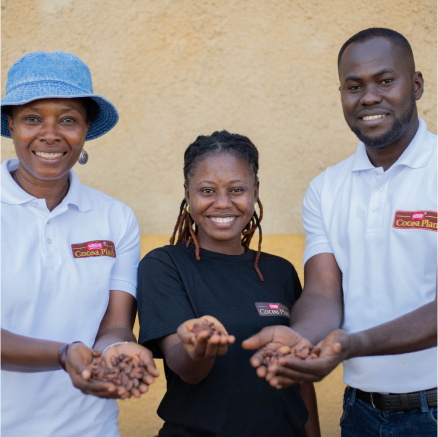 Lancement du Plan Cacao Nestlé.Lancement du Plan Cacao Nestlé en Côte d’Ivoire reposant sur 3 piliers: de meilleures pratiques agricoles, de meilleures conditions de vie pour les communautés et une meilleure traçabilité du cacao.
Lancement du Plan Cacao Nestlé.Lancement du Plan Cacao Nestlé en Côte d’Ivoire reposant sur 3 piliers: de meilleures pratiques agricoles, de meilleures conditions de vie pour les communautés et une meilleure traçabilité du cacao. -
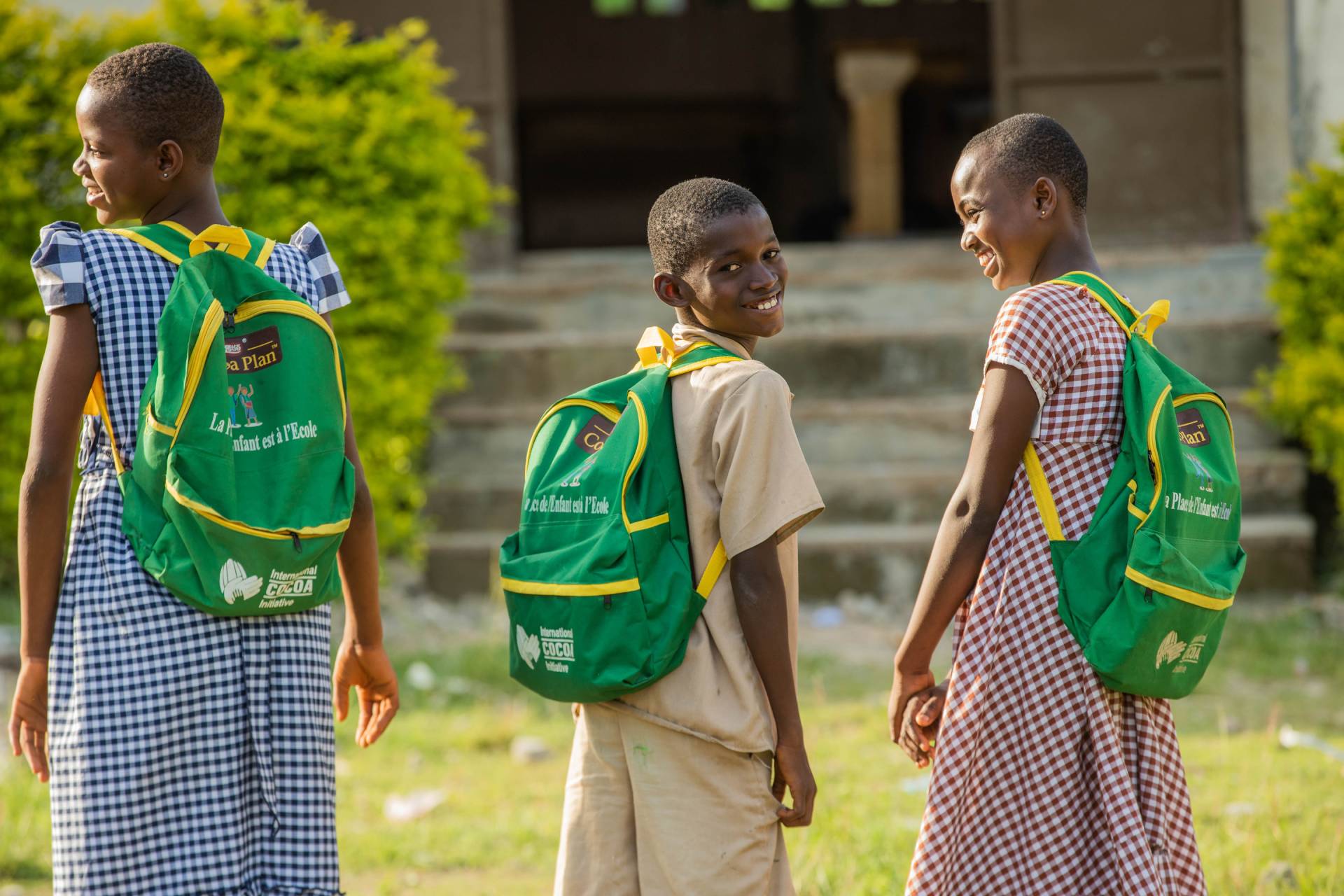 Mise en place de Systèmes de Suivi et de Remédiation du Travail des Enfants.International Cocoa Initiative (ICI). Cet outil innovant a été créé conjointement avec Nestlé pour contribuer à prévenir le risque de travail des enfants . Nestlé devient la première grande entreprise chocolatière à introduire un programme de ce type dans le secteur du cacao – désormais devenu une norme.
Mise en place de Systèmes de Suivi et de Remédiation du Travail des Enfants.International Cocoa Initiative (ICI). Cet outil innovant a été créé conjointement avec Nestlé pour contribuer à prévenir le risque de travail des enfants . Nestlé devient la première grande entreprise chocolatière à introduire un programme de ce type dans le secteur du cacao – désormais devenu une norme. -
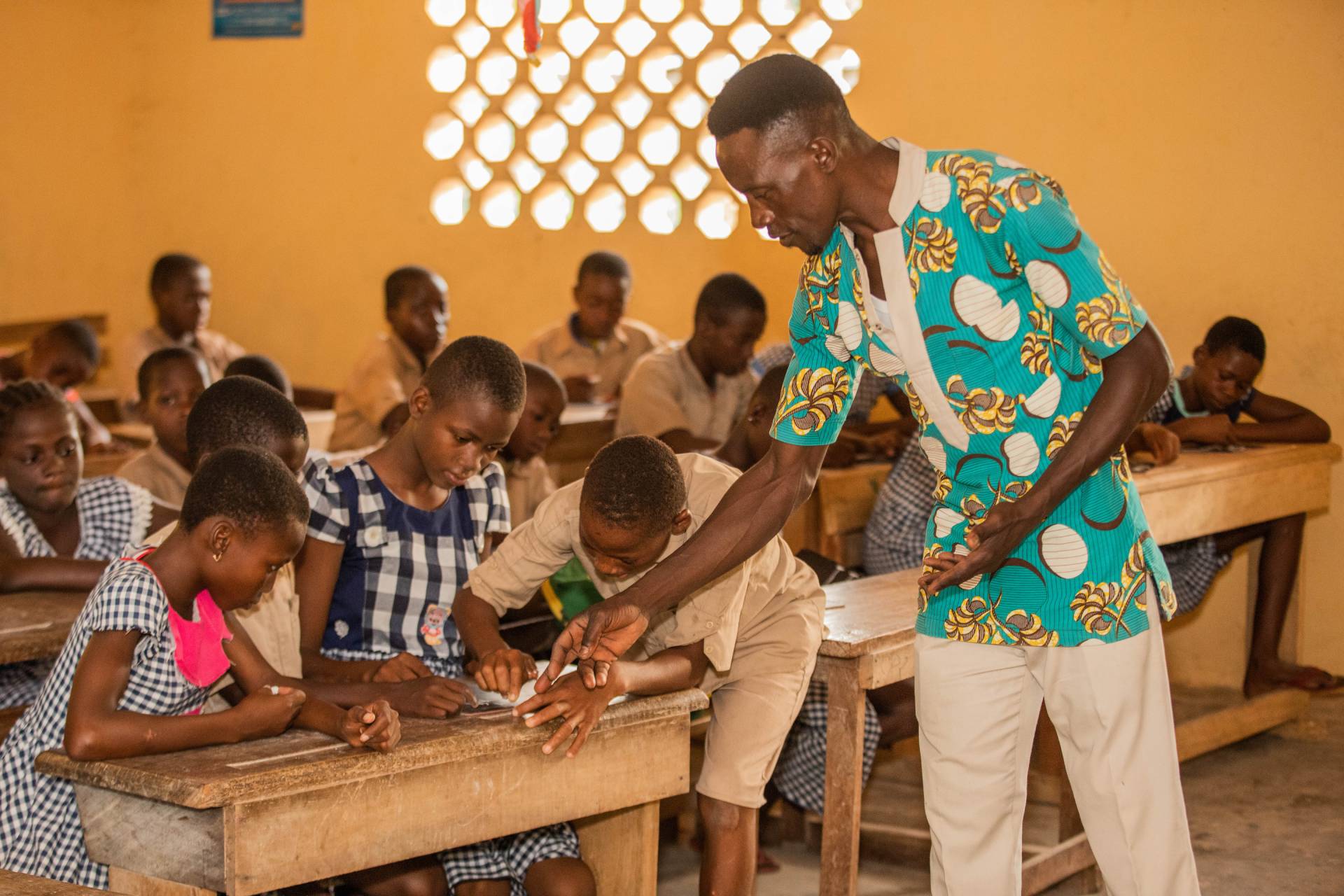 Expanding access to education.Nestlé kicks off a program to build 40 schools in 4 years in collaboration with World Cocoa Foundation (WCF).
Expanding access to education.Nestlé kicks off a program to build 40 schools in 4 years in collaboration with World Cocoa Foundation (WCF). -
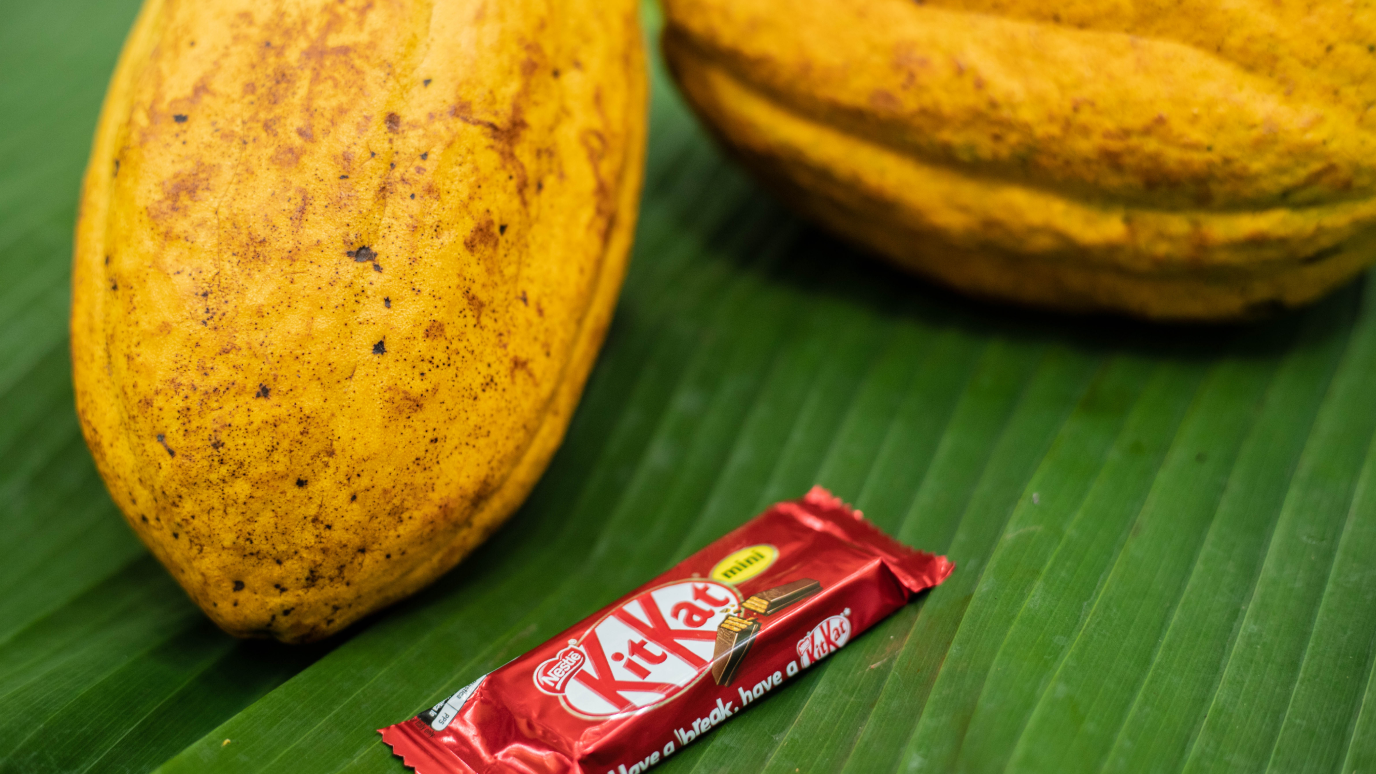 KITKAT montre la voieKITKAT devient la première marque de Nestlé à s’approvisionner en totalité auprès du Plan Cacao Nestlé, selon une approche de bilan massique. La certification «bilan massique» de Rainforest Alliance démontre que nous achetons un volume de cacao certifié par Rainforest Alliance équivalent au volume utilisé dans votre KITKAT.
KITKAT montre la voieKITKAT devient la première marque de Nestlé à s’approvisionner en totalité auprès du Plan Cacao Nestlé, selon une approche de bilan massique. La certification «bilan massique» de Rainforest Alliance démontre que nous achetons un volume de cacao certifié par Rainforest Alliance équivalent au volume utilisé dans votre KITKAT. -
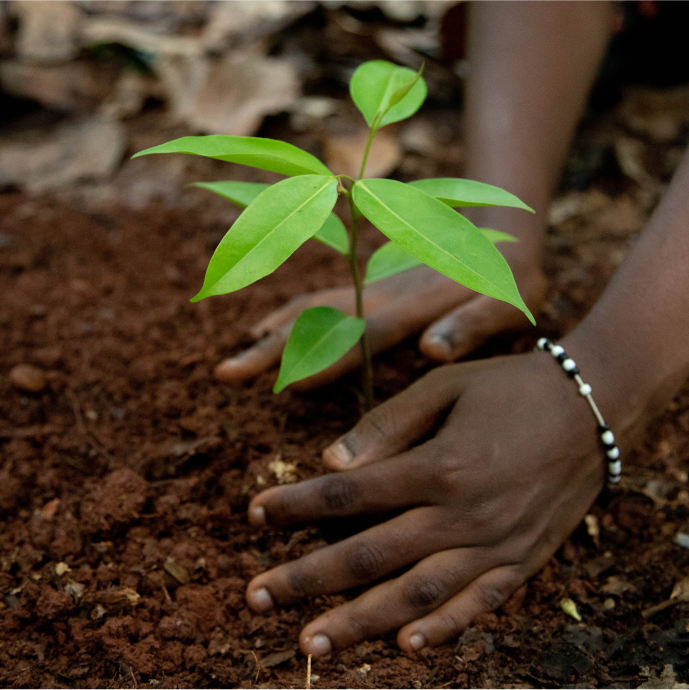 Adhésion à l’initiative Cacao et ForetsNestlé rejoint la CFI, travaillant aux côtés d’autres producteurs de cacao et de chocolat, ainsi que de gouvernements, avec l’ambition de contribuer à réduire la déforestation et la dégradation des forêts dans les régions productrices de cacao. Découvrez nos rapports qui rendent compte des progrès accomplis (disponible en anglais uniquement).
Adhésion à l’initiative Cacao et ForetsNestlé rejoint la CFI, travaillant aux côtés d’autres producteurs de cacao et de chocolat, ainsi que de gouvernements, avec l’ambition de contribuer à réduire la déforestation et la dégradation des forêts dans les régions productrices de cacao. Découvrez nos rapports qui rendent compte des progrès accomplis (disponible en anglais uniquement). -
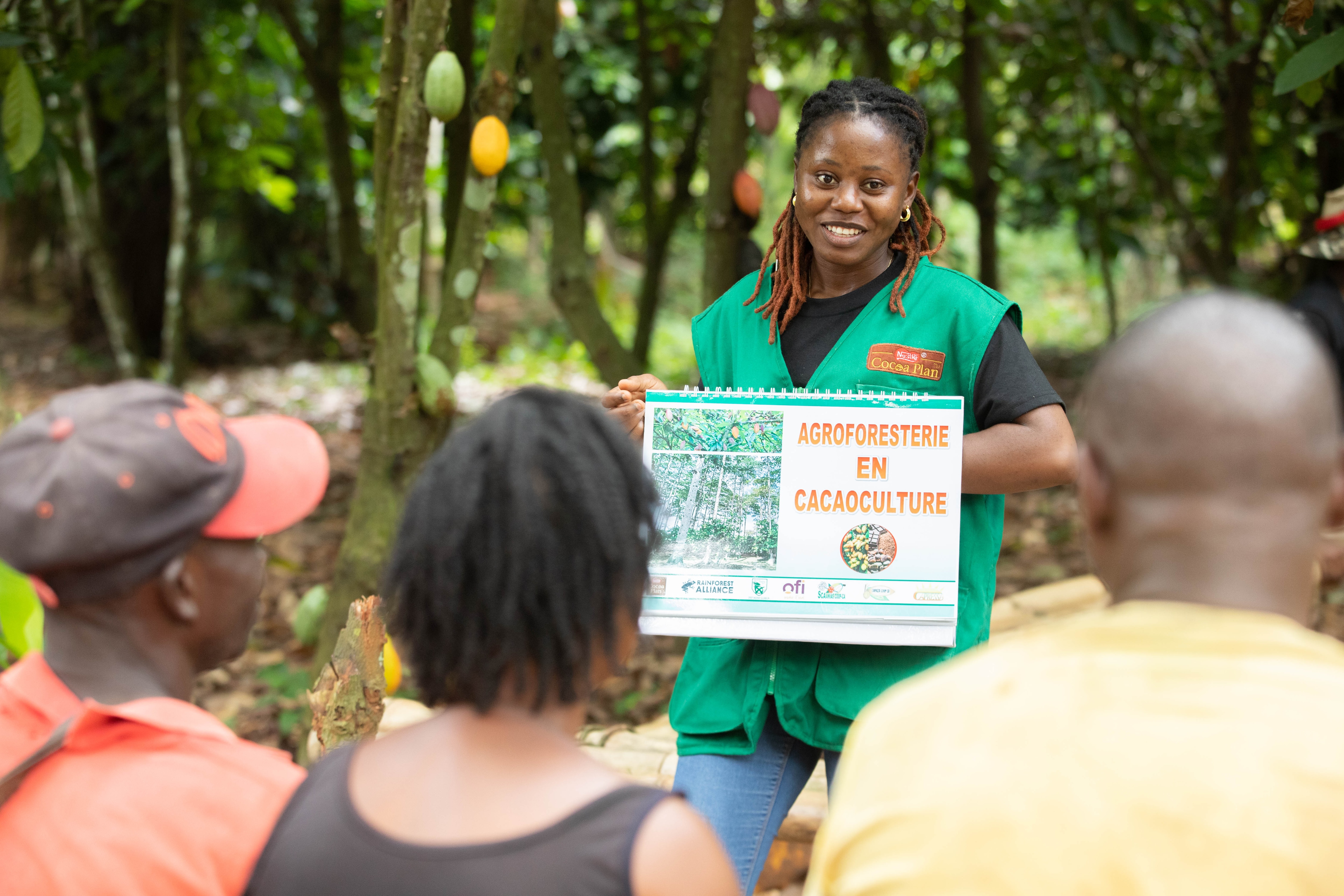 Lancement du projet de la réserve forestière du Cavally.En partenariat avec le ministère des Eaux et Forêts de Côte d’Ivoire, l’Agence forestière (SODEFOR) et la Fondation Earthworm, Nestlé lance un projet ayant pour objectif de contribuer à protéger et à restaurer cet habitat forestier unique à travers un projet financé sur trois ans. Après une première phase réussie, nous sommes impatients d’étendre notre soutien avec l’aide de nouveaux partenaires.
Lancement du projet de la réserve forestière du Cavally.En partenariat avec le ministère des Eaux et Forêts de Côte d’Ivoire, l’Agence forestière (SODEFOR) et la Fondation Earthworm, Nestlé lance un projet ayant pour objectif de contribuer à protéger et à restaurer cet habitat forestier unique à travers un projet financé sur trois ans. Après une première phase réussie, nous sommes impatients d’étendre notre soutien avec l’aide de nouveaux partenaires. -
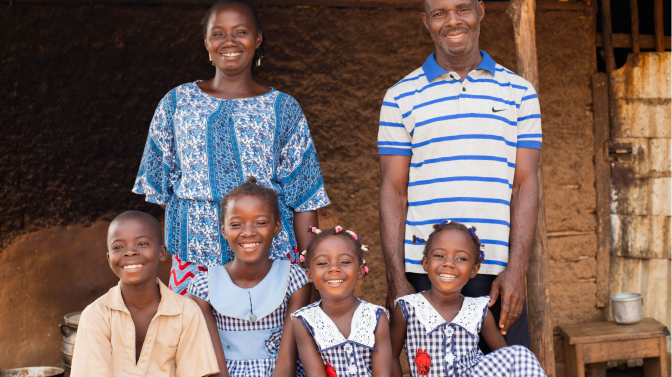 : Pilotage du programme d’accélération des revenus.Le programme pilote d’accélération des revenus est lancé. Il concerne 1000 familles productrices de cacao en Côte d’Ivoire. Les principes clés sont établis pour soutenir l’annonce du test à grande échelle à partir de 2022, auquel plus de 10 000 familles participent.
: Pilotage du programme d’accélération des revenus.Le programme pilote d’accélération des revenus est lancé. Il concerne 1000 familles productrices de cacao en Côte d’Ivoire. Les principes clés sont établis pour soutenir l’annonce du test à grande échelle à partir de 2022, auquel plus de 10 000 familles participent. -
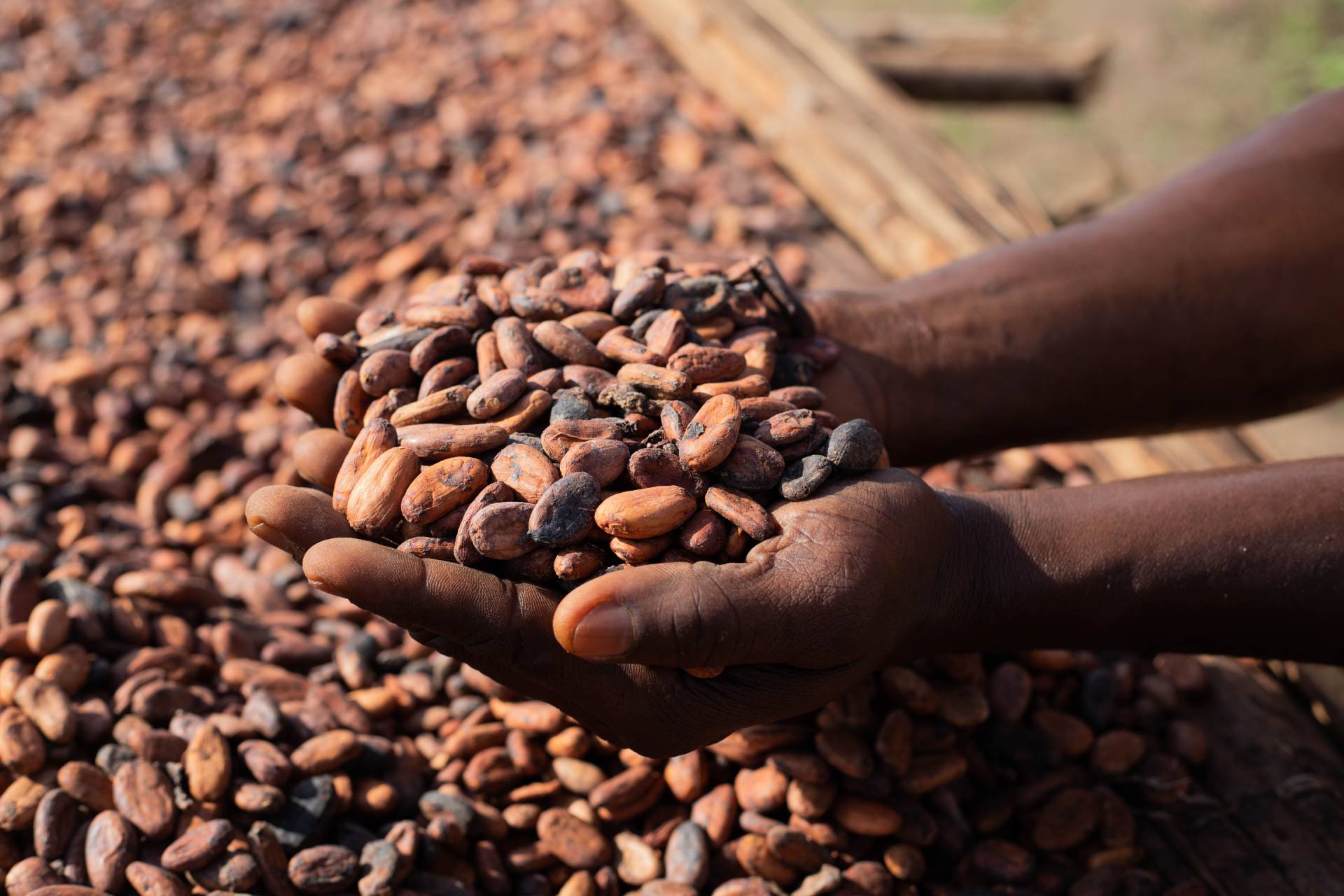 Lancement officiel du programme d’accélération des revenus.En janvier 2022, nous avons lancé officiellement le programme innovant d’accélération des revenus, visant à accroître le revenus des familles de cacaoculteurs en encourageant les pratiques positives dans les communautés. Lancé tout d’abord en Côte d’Ivoire auprès de 10 000 familles, ce programme s’étend au Ghana en 2024 avec l’ambition de couvrir 160 000 familles productrices de cacao d’ici 2030.
Lancement officiel du programme d’accélération des revenus.En janvier 2022, nous avons lancé officiellement le programme innovant d’accélération des revenus, visant à accroître le revenus des familles de cacaoculteurs en encourageant les pratiques positives dans les communautés. Lancé tout d’abord en Côte d’Ivoire auprès de 10 000 familles, ce programme s’étend au Ghana en 2024 avec l’ambition de couvrir 160 000 familles productrices de cacao d’ici 2030. -
 Le Plan Cacao NestléLe Plan Cacao Nestlé, lancé en 2009, opère dans plus de 10 pays producteurs de cacao et a engagé plus de 150 000 familles productrices de cacao participantes. Plus d’une décennie d’expérience et d’apprentissage sur le terrain nous a permis de lancer le programme d’accélération des revenus. En 2022, nous avons approvisionné 68,3% de nos volumes de cacao auprès du Plan Cacao Nestlé avec pour objectif d’atteindre 100% d’ici 2025.
Le Plan Cacao NestléLe Plan Cacao Nestlé, lancé en 2009, opère dans plus de 10 pays producteurs de cacao et a engagé plus de 150 000 familles productrices de cacao participantes. Plus d’une décennie d’expérience et d’apprentissage sur le terrain nous a permis de lancer le programme d’accélération des revenus. En 2022, nous avons approvisionné 68,3% de nos volumes de cacao auprès du Plan Cacao Nestlé avec pour objectif d’atteindre 100% d’ici 2025.
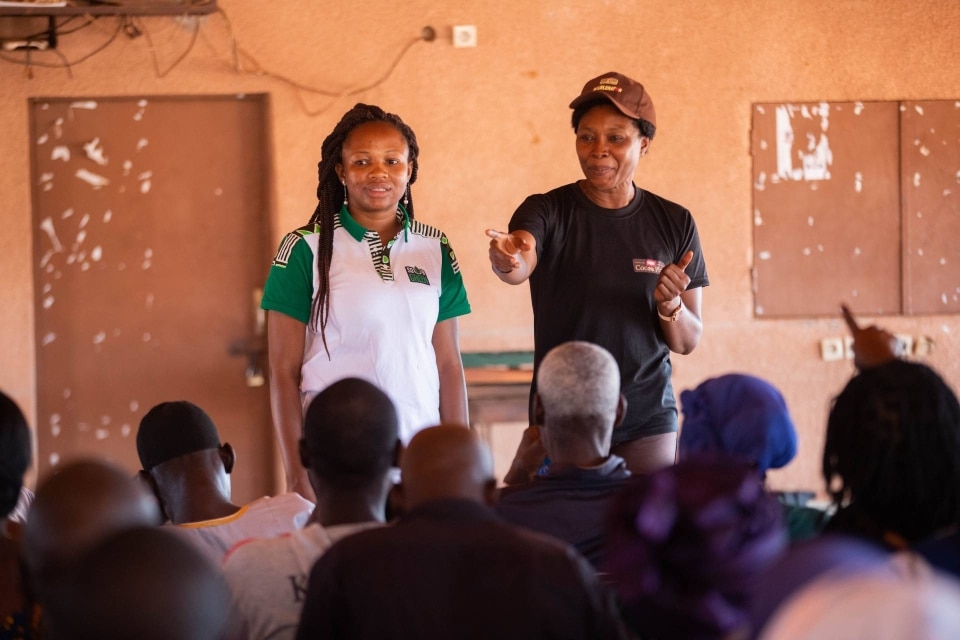
Our Partners
Delivering impact together
The Nestlé Cocoa Plan is building on more than a decade of experience in the field with the support and help of our partners. Progress and impact are made possible only with their support beginning with cocoa-farming families and the local communities.
Add view
Add view
English
